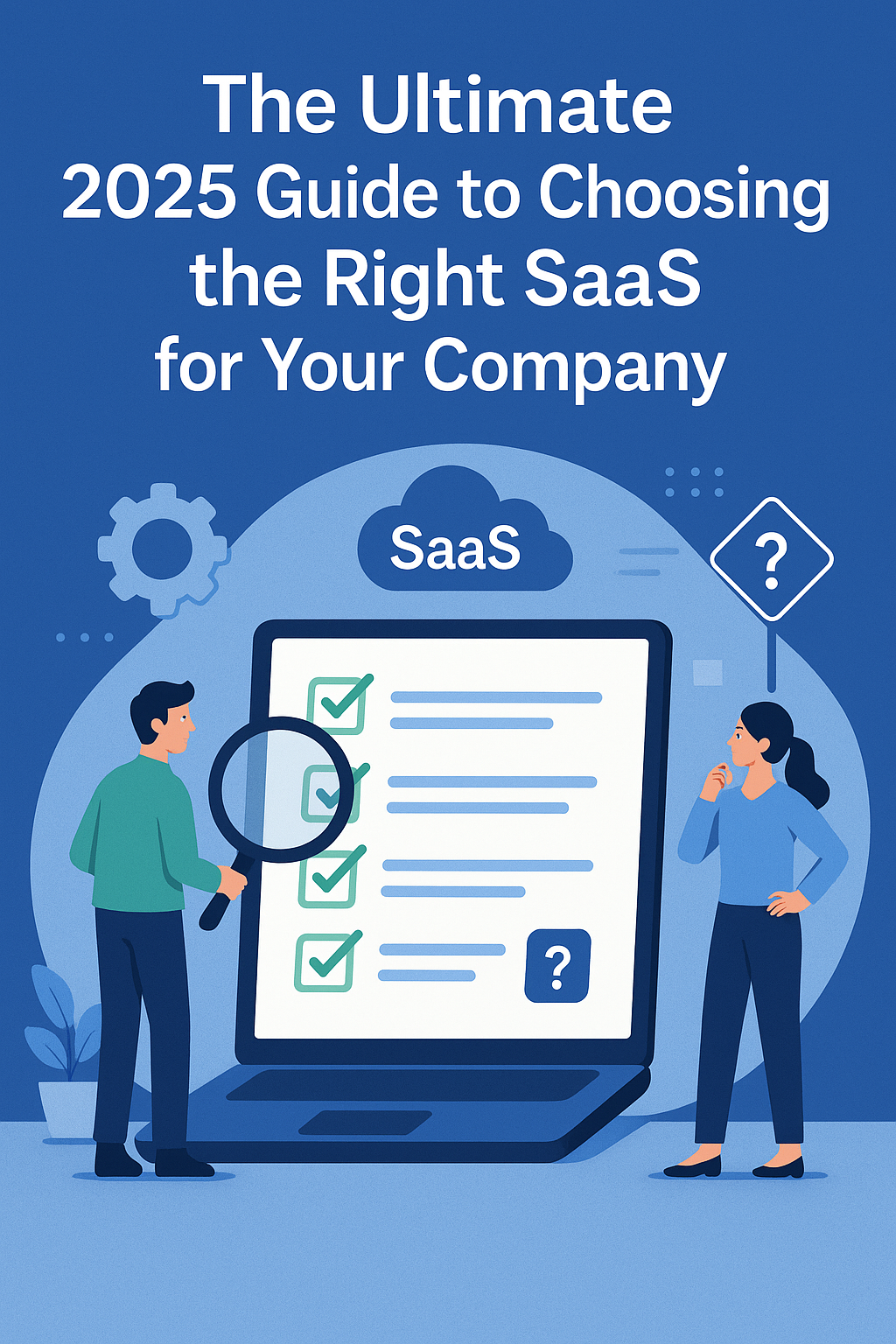
The Ultimate 2025 Guide to Choosing the Right SaaS for Your Company
Choosing the right SaaS for your company in 2025 feels a lot like standing in front of a massive buffet—you want everything, but you need to pick what's actually good for you. With so many tech tools for entrepreneurs popping up, it's easy to get overwhelmed. Don't worry; we're here to break it down, step-by-step, just like assembling a perfect taco: one delicious ingredient at a time.
What Is SaaS Anyway?
SaaS, short for Software as a Service, is like renting a luxury car instead of buying it—you get all the benefits without the heavy maintenance. Instead of installing software on your devices, you access it via the cloud. Handy, right?
Why Picking the Right SaaS Is Critical
Imagine trying to fix a leaking pipe with duct tape instead of a wrench. That's what happens when you choose the wrong software—it holds for a while, but it won’t last. The right SaaS boosts your workflow, saves you time, and protects your precious business data analytics tools from falling into the wrong hands.
How to Choose the Right SaaS for Your Company
Let's dive in like pros!
1. Define Your Needs
Before you even start Googling, ask yourself: What exactly do I need? Are you looking for productivity software for business owners? Need automation tools for teams? Get crystal clear, or risk ending up with tools that gather digital dust.
2. Set a Realistic Budget
Think of SaaS pricing like buying coffee. Sure, you can get a $2 cup at the diner or a $7 artisan brew downtown. Which one fits your daily grind?
3. Check Integration Capabilities
Does your new tool play nicely with your existing tech stack? If not, you'll be stuck copying and pasting like it's 1999. Look for solutions that easily integrate with AI tools for business and CRM systems for startups.
4. Prioritize Security
Small business cybersecurity isn't a "nice to have" anymore—it's a must. How to protect your online business from cyber threats? Start by picking SaaS vendors with end-to-end encryption, regular audits, and robust compliance certifications.
5. Test the User Experience
If a platform looks like it was designed in the early 2000s, run. Fast. Good SaaS should feel as intuitive as swiping right on your favorite dating app.
Best CRMs for Startups in 2025
Looking for the best CRMs for startups? Here’s the scoop:
HubSpot CRM
It’s like the Swiss Army knife of CRM systems for startups. Sleek, powerful, and—bonus!—there’s a free version to get your feet wet.
Zoho CRM
Affordable and customizable. Think of it as building your dream sandwich at a deli—you pick what you want, and it’s made fresh for you.
Using AI in Small Business: The New Frontier
Incorporating AI tools for business is like hiring a super-smart intern who never sleeps. From predictive analytics to customer service chatbots, AI can seriously level up your game.
Best AI Tools to Boost Small Business Productivity
Imagine an army of digital assistants working around the clock—email filtering, data crunching, customer support—you name it.
Top 10 Software Every Business Should Use
Ready for a rapid-fire list? Buckle up!
- Slack (communication)
- Asana (project management)
- HubSpot (CRM)
- QuickBooks (accounting)
- Dropbox (storage)
- Zoom (meetings)
- Google Workspace (collaboration)
- Salesforce (CRM powerhouse)
- Monday.com (team management)
- Cloudflare (cybersecurity)
Steps to Set Up a Secure Cloud Infrastructure
Setting up cloud solutions for entrepreneurs doesn’t have to be rocket science. Just follow these steps:
1. Choose a Reputable Cloud Provider
Think AWS, Azure, or Google Cloud. Stick with the big players—they know how to play safe.
2. Implement Multi-Factor Authentication
One password isn’t enough anymore. MFA is like having a security guard double-check your ID.
3. Regular Backups
Always, always back up. Data loss is like spilling coffee on your laptop—only worse.
Cloud Solutions for Entrepreneurs
From storage to scalability, cloud solutions give entrepreneurs the wings they need to soar without breaking the bank.
Automation Tools for Teams: A Must-Have
Using how to automate your business workflow isn’t just trendy; it's crucial. Automation tools can handle repetitive tasks so your team can focus on what really matters—growing your business.
Small Business Cybersecurity: No Longer Optional
With cyberattacks growing more vicious by the minute, cybersecurity tips for small businesses aren’t just helpful—they’re survival tactics.
How to Integrate Tech into Customer Service
Customer service tech can transform how people see your brand. Quick responses, personalized experiences, and proactive help? That’s how you win loyalty in 2025.
Conclusion: Navigate SaaS Like a Pro
Choosing the right SaaS is like navigating a jungle—without a map, you’re lost. But with the right guidance (ahem, this guide), you can carve out a path toward efficiency, growth, and long-term success. Remember, your SaaS tools should feel like your team’s secret weapon, not another burden to manage. Stay sharp, stay safe, and pick wisely!
FAQs
What is the biggest benefit of using SaaS for small businesses?
Flexibility and scalability without the hefty upfront costs. It’s like renting the best equipment without the hassle of ownership.
How can I ensure the SaaS I choose is secure?
Look for features like end-to-end encryption, GDPR compliance, and third-party security audits. Never compromise on security!
Are there free SaaS options available for startups?
Absolutely! Many platforms offer free tiers or trial periods, perfect for startups watching their budgets.
How does SaaS help improve customer service?
SaaS can automate responses, track customer queries, and personalize interactions, making your customers feel heard and valued.
Can I switch SaaS providers if my needs change?
Definitely. Just make sure you understand the terms of service and have a solid data migration plan in place before you leap.